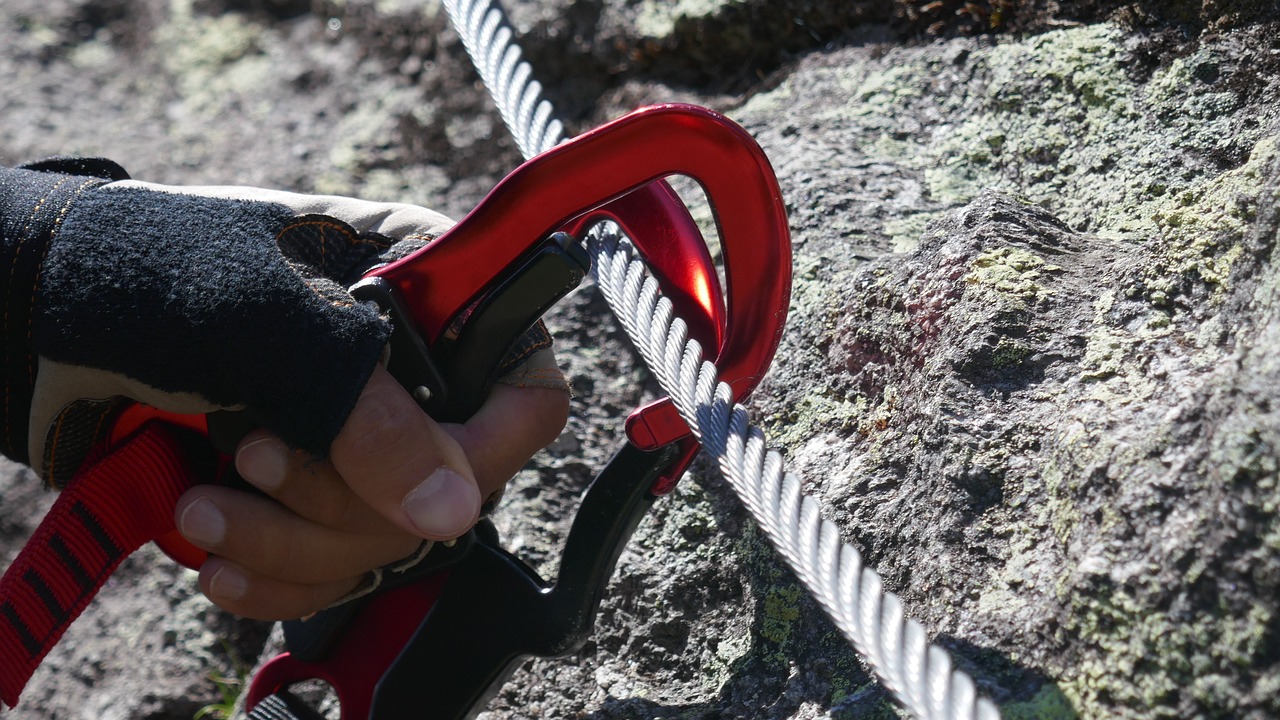Indoor rock climbing offers an intense upper-body workout without the need for lifting any heavy weights. But after a while, you may crave more of a challenge, the type that only outdoor climbing will bring. Perhaps you just want the beautiful scenic views that the gym does not offer.
You may have had some indoor climbing experience, but rock climbing outdoors is a whole different game. Are you new to rock climbing in the great outdoors? Here are 5 tips for transitioning from indoor to outdoor climbing for beginners.
Find an Experienced Guide
Don’t allow confidence in your indoor climbing abilities to overshadow your lack of outdoor climbing experience. It takes time to become familiar with the more challenging terrain. And while those natural scenic views are breathtaking, they can also be a bit scary at first.
Never forget that indoor climbing takes place in a highly controlled environment, whereas outdoor climbing does not. An experienced outdoor rock climber can give you advice on tying knots, anchor building, and rope management that only comes with experience.
If you don’t know anyone with experience in this sport, enquire at your gym or contact your local rock climbers association. They will put you in touch with a suitable mentor. If you’re on a tight budget, you might find their fees expensive. Discuss what you can afford rather than going it alone.
Practice Your New Skills
Never start an outdoor climb unless you’re confident that you know exactly what you’re doing. Building a top rope anchor, hanging a top rope, and anchor management are just some of the skills you’ll need as a beginner in outdoor rock climbing.
Practice these new rock climbing skills you’ll need, as far as possible, before heading out to the climb site. For example, you can practice tying rope knots at home until you become more proficient. Watch videos online on outdoor climbing, and take notes.
With enough practice, you’ll soon master the art of outdoor rock climbing. In time, you may even want to turn your passion into a source of income and grow a rock-climbing business of your own.
Start Slowly
Indoor climbing routes are much shorter than outdoor ones and are far less hazardous. Although you may be a top-tier indoor climber, that does not necessarily translate to high proficiency in outdoor climbing. You’re a beginner once again, so take it slowly.
Unlike indoor routes, these will not be demarcated, and the steeper gradients plus the variations in natural formations make the climb more physically demanding. Because an outdoor climb can be far more arduous than an indoor one, start with a gentler, shorter route designed for beginners.
Start your outdoor climbing in an area familiar to you, not on your first trip to the United States or in the middle of an overgrown jungle! Familiar surroundings reduce the anxiety you have on your first climb. Take your climbing mentor or an experienced climbing friend with you, or join an outdoor climbing club.
Get the Right Gear
As with any sport, the right gear is everything. It can mean the difference between a successful climb, and tragedy. Buy new equipment from a reputable climbing supplies dealer. Avoid second-hand gear if possible, as regular use may have worn it down and made it less reliable.
You’ll need the following gear at a minimum:
- A climbing harness
- UIAA-certified (international standard) or EN 892-certified (European standard) climbing rope
- Anchoring equipment
- Climbing shoes and helmet
- A rope bag (optional, but recommended)
You’ll need a few other things as well, which although unrelated to rock climbing itself, are essential for the outdoors. You’ll likely have quite a trek to the site. If you’re a keen hiker, you probably have protection from sun exposure (sunscreen/cap), hiking boots, and a backpack.
If you don’t already have these, add them to your shopping list. Never start any outdoor climb without the right gear. This applies to absolute beginners and experienced outdoor climbers alike.
Safety First
Even the most experienced climbers can fall victim to loose rocks or unexpected adverse weather conditions. Your safety should always come first. It starts with having the right training and gear. But there’s more to safety than these essentials.
Many climbers underestimate the transition from indoor to outdoor climbing, to their peril. Don’t let it happen to you. Check the weather report before going out to climb. If it has been raining heavily in that area, wait a day or two until the terrain dries out.
An accident while outdoor climbing can be very serious, due to the greater heights and rougher terrain. Learn basic first-aid. It’s a great skill to have, even in the workplace. Carry bandages and disinfectant in your backpack, or buy a readymade first-aid kit at a pharmacy.
Always let someone know where you will be climbing. Arrange to check in with them upon arrival at the site and after the climb. If they don’t hear from you at an expected time, they will know to come looking for you or alert emergency rescue services. They’ll also know where to start searching.

